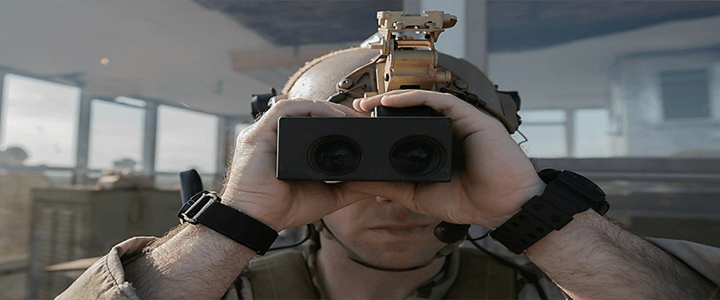FROM THE DESK OF CLEARANCEJOBS.COM
Your insider threat program. “On May 18 the Department of Defense (DOD) issued Change 2 to DOD 5220.22-M, ‘National Industrial Security Operating Manual (NISPOM).’ The change ‘requires contractors to establish and maintain an insider threat program.’ Insider threat detection is counterespionage – finding those within your organization who have broken trust.”
The road to your clearance. “A security clearance really refers to eligibility to access classified information – and you can’t get a clearance (or access) on your own. In order to obtain a security clearance, you must first obtain a job that requires one. Your employer – either the federal government or a government contractor – will walk you through the process of obtaining a clearance, after they’ve decide they want you for the job.”
TECH, PRIVACY, & SECRECY
NSA’s self-imposed security risk: macros. “At the heart of the NSA’s intelligence reporting process are—or at least were, in 2012—some templates using Microsoft Word macros. That’s one of the unbelievable details revealed in a series of Edward Snowden’s emails to NSA’s SIGINT Oversight and Compliance Division . . . . the security risk of the macros, which had already been commonly used as attack vectors in the 1990s, raise questions about why NSA adopted Word for intelligence reporting and minimization in the first place.” (Motherboard)
Spoils of North Korea’s cyberwarfare. “North Korea hacked into more than 140,000 computers at 160 South Korean firms and government agencies, planting malicious code under a long-term plan laying groundwork for a massive cyber attack against its rival . . . . The hacking began in 2014 and was detected in February, after North Korea managed to steal information from two conglomerates including defense-related material . . . .” (Reuters) See also, “North Korean Hackers Stole F-15 Wing Designs” and “Files came from chaebol, state-run enterprises and government agencies.”
Defense’s innovation quest: there’s no place like home. “The Pentagon has made an unprecedented push to cozy up with Silicon Valley over the past two years, opening satellite offices on the West Coast and Boston in an effort to import fresh insight, ideas and innovation from the private sector to the military. But the highly public outreach doesn’t sit well with some members of the Beltway’s defense contracting base who feel ignored and overlooked despite knowing how to navigate the Defense Department’s complex acquisition and procurement processes.” (Government Executive). See also, “Carter Stresses Importance of Innovation to Warfighters.”
CONTRACT WATCH
Counter-terror contracting risks. “Mateen worked for G4S Secure Solutions, known as Wackenhut Security before it became G4S’s U.S. subsidiary. Based in Jupiter, Florida, G4S Secure Solutions currently holds a contract with DHS. . . . The massacre at the Pulse nightclub suggests that $1 trillion U.S. tax dollars that have gone to domestic counter-terrorism since 9/11 are at least somewhat poorly accounted for. That conclusion is backed up by a 2010 National Academies of Science report which, noted DHS did not have any ‘risk analysis capabilities and methods’ to make sure that the money it was giving to companies like G4S was going to the right place.”
Contracting for contracting analysis. “The General Services Administration is working on a contract vehicle to buy better analytic tools to crunch data on contract vehicles, including those used to buy analytic tools. The Federal Acquisition Service System Transformation (FASST) office released a request for quotes for the Data Analytics Tools broad purchase agreement (BPA) on June 8, asking for small businesses with contracts on GSA schedules or GWACs to submit proposals by July 12.” (Federal Times)
THE FORCE AND THE FIGHT
Watching Omar Mateen: the FBI’s investigation. “The FBI investigated the Orlando shooter for 10 months beginning in 2013, putting him under surveillance, recording his calls and using confidential informants to gauge whether he had been radicalized after the suspect talked at work about his connections with al-Qaeda and dying as a martyr. As part of the investigation, Omar Mateen, who was killed in a shootout with police on Sunday morning, was placed on a terrorism watch list and interviewed twice before the probe was closed in March 2014 because agents concluded he was not a threat . . . .” See also, “Why did two FBI investigations fail to identify the Orlando gunman?”
Why ISIS eclipsed AQ. “Two years ago, Islamic State militants marched into Mosul, Iraq’s second largest city. In quick succession, the jihadists captured a large swath of northern Iraq and consolidated their control over parts of Syria. Today, Islamic State has in many ways overshadowed al Qaeda as the world’s most serious terrorist threat. Western and Middle Eastern security officials now view Islamic State as the greater danger to their domestic security, especially because of its mastery of social media and its ability to recruit thousands of disenchanted young Muslims into its ranks.” (Reuters)
Next moves in the South China Sea chess game. “We are not seeking a conflict with China, nor do we advocate a war. We do not believe that China is an inevitable adversary of the United States. But we are increasingly concerned that Chinese actions in the South China Sea, if left unopposed, will give it de facto dominance of an area that is a vital strategic interest to the United States. More direct U.S. actions would involve significant risks — but so would failing to act, and those risks are far less appreciated.” (War on the Rocks)




